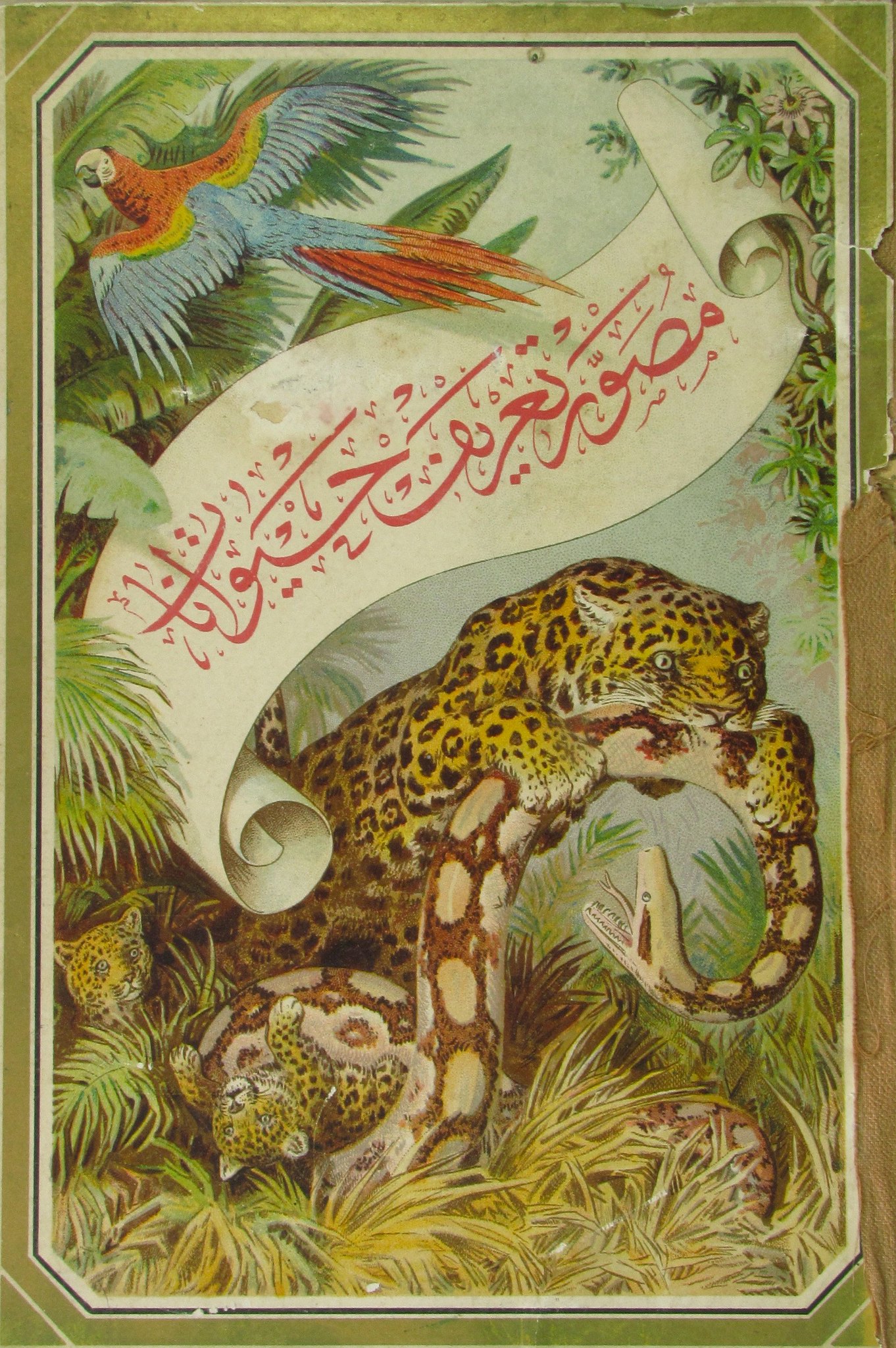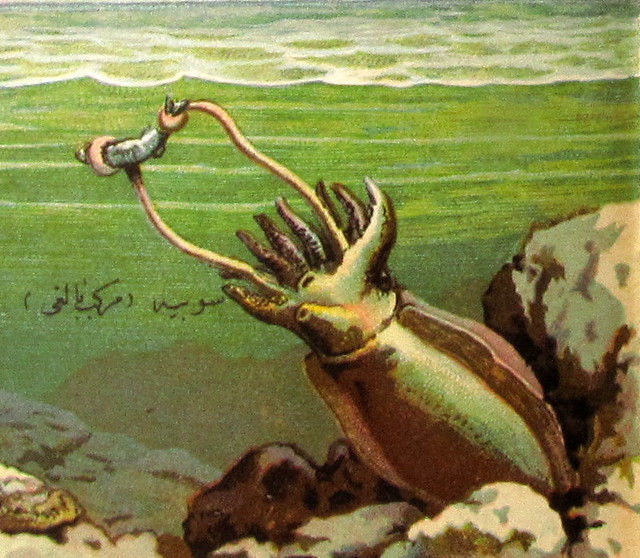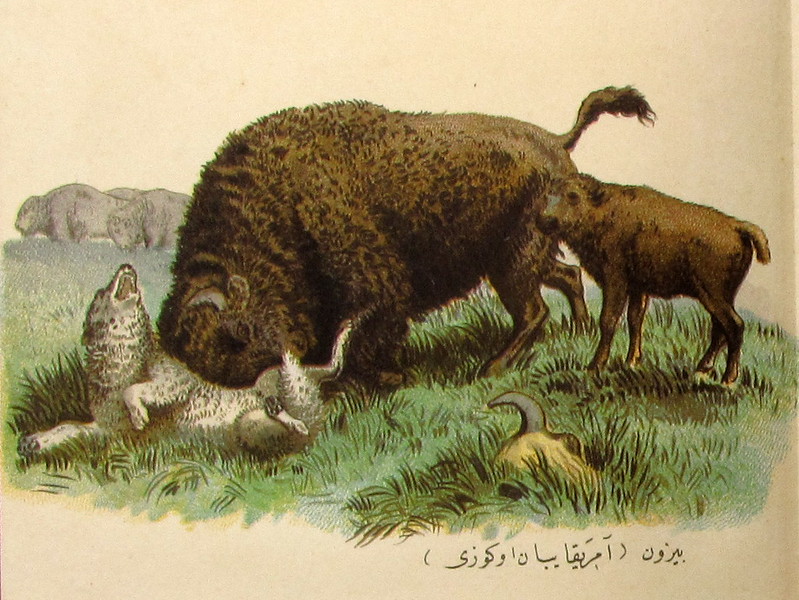
The cover of Mussaver Tarif-i Hayvanat, or Illustrated Guide to Animals. M. Emin, Istanbul: Matbaa-i Osmaniye, 1310 (1892)
A great deal of fascinating work has been done on the political implications of Social Darwinism - the misguided but extremely popular 19th century effort to apply Darwin's theory of natural selection to human society. Historians have highlighted the role of this ideology in justifying everything from imperialism to extreme capitalism to eugenics. Today, this Ottoman Bestiary seems as good a pretext as any to discuss how social Darwinism contributed to the outbreak of the First World War.
As applied to interstate relations, social Darwinism assumed the state and all its people to be a single being with a common fate analogous to a living organism. Foreign policy became, then, "the art of pursuing the struggle for existence among social organisms." This in turn led to theories such as Austrian sociologist Ludwig Gumpolowicz's, that the world only had room for a steadily shrinking number of superpowers whose national vitality would condemn others to second-tier status. Or, in the formulation of more pessimistic statesmen, national death.


Timsah, right. The same word referred to both crocodiles and alligators. Above, Mürekkep Baligi, or literally, Ink Fish.
On the eve of WWI, Ottoman leaders believed that building and maintaining firm alliance with Germany, even at the price of war, was necessary to avoid national extinction (See the second chapter of Mustafa Aksakal's Ottoman Road to War for more on this) The Ottomans, of course, were by this point the victims of European imperialism, so it is easy to see why social Darwinist thought led them to dwell on the fear of losing the struggle for survival rather than the glory of winning.
Striking, though, is the extent to which even among European imperial powers social Darwinist thought manifested itself most clearly in a pronounced fear national elimination on the eve of the First World War. A surprising number of quotes from European statesmen imply that the decision to risk war was taken not rashly, or in expectation of an easy victory, but rather with an eye toward preventing the existential consequences of defeat. Thus German Chancellor Theobald von Bethmann-Hollwegg told a colleague on June 5th, 1914 "If there is war with France, England will march against us to the last man," (L.C.F. Turner, Origins of the First World War, p. 73) while Austrian Field Marshall Franz Conrad von Hozendorf says of the Austrian Empire "'so ancient a Monarchy and so glorious an Army' ought not to perish without putting up a fight"(Turner, 79). If exaggerated claims of existential threats now seem a standard feature of nationalist rhetoric, these claims, expressed privately in both of the above quotes, seem to reflect a new dimension in nationalist thought in the late 19th and early 20th century. The risk they assume was to the very existence of the nation itself rather than national prestige, or even national security in the abstract.
One interesting possibility is that 19th century imperialism, viewed in social darwinist terms, helped produce this shift at a more psychological level. That is, the experience of ruling an empire was enough to subconsciously foster a newfound sense among European leaders that military defeat meant not just humiliation but wholesale domination or death. It seems plausible, at least, that a German general contemplating losing a war in 1900 might imagine defeat to look like France's in 1871 - frightening, certainly, but endurable - whereas in 1914 his imagination would conjure up the fate of the Herero, the Namibian tribe whose extermination was attempted by the German army in 1904. Indeed, works like Mark Mazower's Hitler's Empire, which describes Nazi policy in Eastern Europe as imperialism applied to Slavs, suggest that European statesmen might have been justified in fearing that their populations could face the same treatment they had inflicted on others.
But while I like the idea that Europe's ultimately catastrophic sense of vulnerability could have been a product of its own ruthlessness, that doesn't quite justify all these pictures of animals eating each other. So let me offer some more relevant speculation: in the era before World War One not only was the prevailing view of war more Darwinian but people's view of Darwin was more militant. While more recently scholars have studied the way the forces of natural selection can produce cooperation and altruism among animals, 19th century naturalists were quicker to see the violent, competitive side of the animal kingdom.
In the M. Emin's Illustrated Guide to Animals, for example, a good third of the pictures show something eating, hunting or killing something else (the cover, of course, manages to show them all at once). Undoubtedly this approach to illustration helped boost sales, but it also seems fair to suggest that it reflected a prevailing view of the animal kingdom that was itself more vicious and animalistic. In this vision of the world - check out the picture below - animals don't so much nurture their young as occasionally gore hostile predators seeking to harm them. It's a tiger-eat-snake-eat-tiger-cub world, and if you're not making plans with the Germans to maul the Russians they will be making plans to devour you.
Bizon (American Ox)










